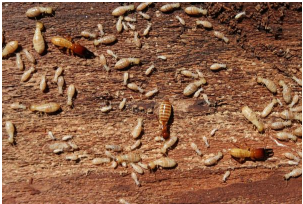Aside from the normal variability of strength within and among species, a lot of other aspects may affect the strength of wood. These aspects may be widely divided in to irregularities and natural defects, aspects in relation to the environment as well as the effects of biological agents.
When the direction of the grain is not parallel to the longitudinal axis of a wooden element, it is regarded and recognized to be cross-grained or more commonly known as short-grained. Cross grain may manifest from spiral grain in the tree or by the method of which the timber is cut and sawn. In linear parts of furniture like spindles and legs, whose performance depends on longitudinal features like bending resistance, cross grain may result in tremendous loss of strength. A lose of grain in one out of five may result in about 2/3 reduction in the modulus of rupture. Wooden knots are another crucial weakening defect.
Basically, loss in strength is the results from the distorted cross grain of wood around the knot and the abnormal grain and tissue direction of the knot itself. Compression wood, on the other hand, is a reaction wood formed in conifers as a result of leaning or crooked stems.
In hardwoods, tension wood is weak in compression parallel to the grain.
On the other hand, strength of wood is also affected by temperature. When the temperature is low, the strength of wood is high, and when the temperature is high, the strength is low. But, if exposed to higher as compared to natural temperatures, or with long period of time, it might end up in permanent loss of strength. Effects of heat in lessening the strength are least in dry air but prevalent in moist air.
Strength of wood is also comparable to duration of loading. Time-related creep in wood lessens the strength over long period of loading. A good example is a beam that might carry a short term load three times as heavy as it could carry for long term.
Insects and wood inhabiting entities such as termites, beetles and ants need also close attention as it affects greatly the wood’s strength. Chances are, the strength of wood weakens over time because of the presence of these little monsters. Another major cause of deterioration on wood is fungi. Wood-staining fungi use the residues of stored materials in sapwood cells.
Be always on the look out for these factors to avoid deterioration and to avail of the wood’s optimum strength in use.
In Kaltimber we offer long lasting A1 rated ironwood. It s natural constitution makes of it an anti decay and anti termite wood perfect for all outdoor use!



